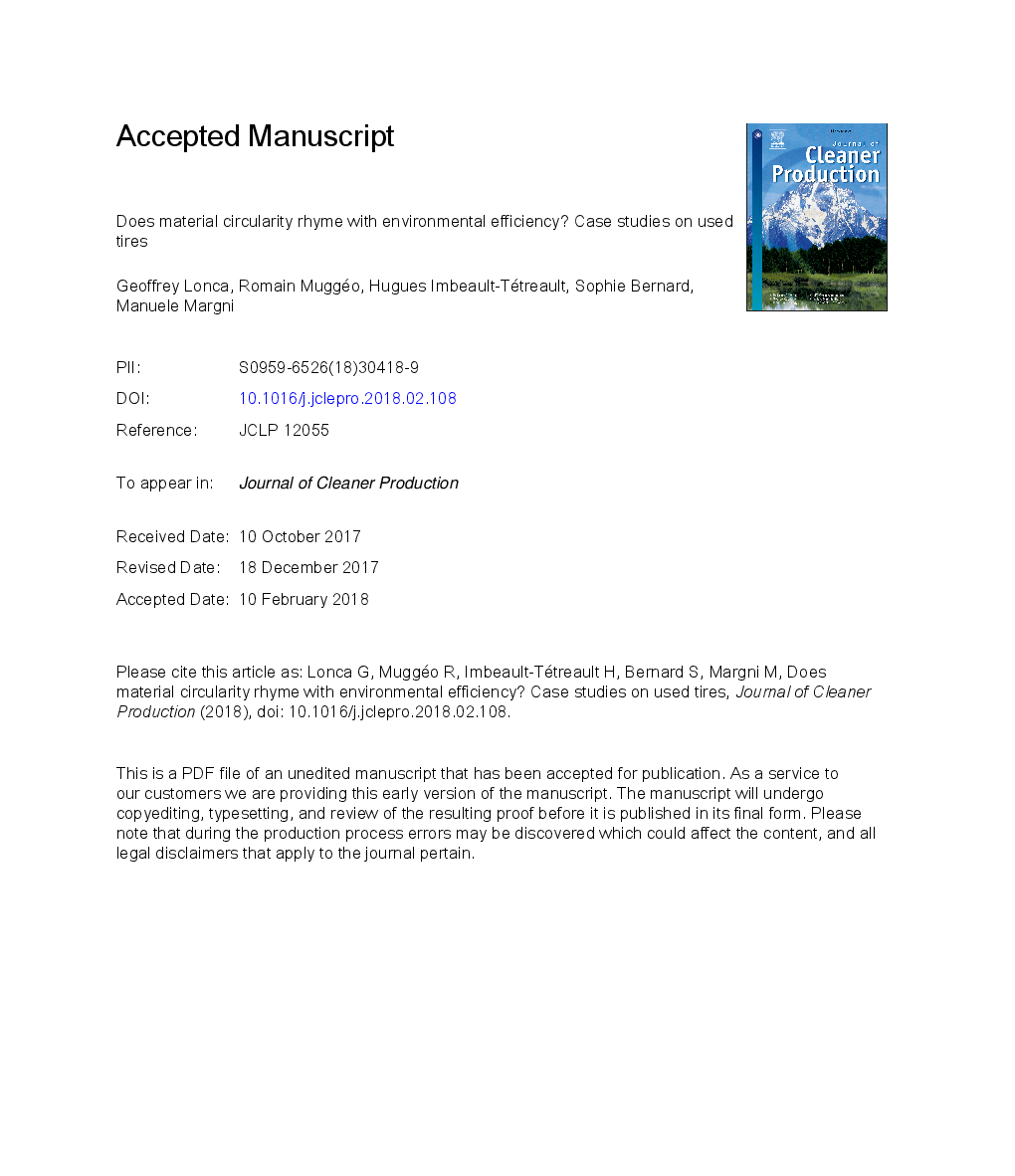ترجمه فارسی عنوان مقاله
آیا محدوده دایره ای مادی با بهره وری محیطی است؟ مطالعات موردی در مورد لاستیک های مورد استفاده
عنوان انگلیسی
Does material circularity rhyme with environmental efficiency? Case studies on used tires
| کد مقاله | سال انتشار | تعداد صفحات مقاله انگلیسی |
|---|---|---|
| 87418 | 2018 | 29 صفحه PDF |
منبع

Publisher : Elsevier - Science Direct (الزویر - ساینس دایرکت)
Journal : Journal of Cleaner Production, Volume 183, 10 May 2018, Pages 424-435

